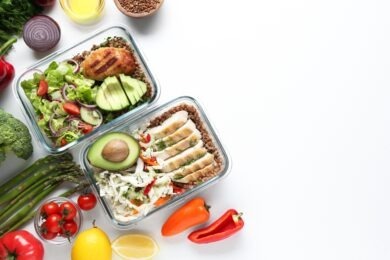It’d be so much easier if we all ate the same things—but we don’t. There are over 100 food allergies and countless diet trends that planners might have to account for at an event. If handled incorrectly, it could severely impact your budget. It’s enough to make event planners want to pull their hair out. But fear not, we’ve got some handy tips for you to nail the execution and send everyone home with full bellies.
Rule #1: Find out your guests’ preferences.
Create a form for attendees to fill out along with the pre-registration information. This should include a check box section where they can mark their food allergies and preferences. List them all together—preferences and allergies should be of equal importance. You never know who is gluten-free by choice and who has Celiac disease. After they finish checking off the boxes, ask attendees a few simple questions about their preferred meals. Do they like to eat healthy or enjoy comfort foods while traveling? Do they often bring their own snacks to supplement meals? Do they usually eat breakfast? You can also ask attendees which planned food functions they plan to attend. You won’t get a perfect attendance number, but it might help you get a more accurate number of plates for the caterer to prepare.
Make it clear within the pre-registration packet that preferences and allergies not mentioned in this packet will be difficult to accommodate at the event. There will be some stragglers, but this type of wording reminds attendees they are responsible for letting you know. Also inform attendees that their meals will be tracked—they’ll be held somewhat accountable for their preferences and you won’t lose your shirt on uneaten food.
Additionally, give attendees a deadline to return these packets. Give your caterers and hotel at least a month of advanced warning, if not more, depending on how large your event is.
Rule #2: Streamline your menus.
If you know that a lot of attendees have different dietary preferences, there’s no need to try and create a single dish for each one. Instead, choose a cuisine that already accommodates a lot of the restrictions on your list, such as Mediterranean or Mexican. Yes, Mexican works—corn tortillas and rice are completely gluten-free! And grilled Mexican vegetables are just as delicious as the meat if done well. Southeast Asian cuisines also shy away from gluten and put vegetables in the spotlight—everyone loves a sesame noodle salad. Once you’ve chosen a cuisine, it should be relatively easy to pick one dish—for instance, tacos or shawarma and falafel plates—that is easy to replicate on a large scale, but with the flexibility to substitute ingredients if necessary. It’s just as easy if you choose to go buffet-style or plated.
Rule #3: Label everything.
Whether you’re listing ingredients on a menu or organizing a buffet, people like to know for themselves what’s in their food—and they know best what they can and can’t eat. Labels should say what the dish is (i.e. bacon mac n’ cheese) and if it appeals to a certain diet (i.e. gluten-free, dairy-free or vegan). Whether it’s on a menu, a card next to the dish on a buffet or a label on each ingredient in the salad bar, it will help attendees flag any oversights and make it easier for servers to help them find a suitable option.
Rule #4: Build the salad bar to end all salad bars.
Everyone loves a good salad bar, but take a cue from Whole Foods Market and make one that has endless options. A good salad bar has at least three kinds of greens, plenty of different vegetables to throw on top, a few sources of protein (chicken, tuna, beans and bacon are crowd favorites), some grains or legumes (go for quinoa or lentils to accommodate the gluten-free contingent) and of course a few different dressings. With that many options, you’ll appease everyone, your caterer can do most of the work upfront (salads are all about prep), and you can rest easy knowing that you’ve created a healthy, filling and flexible option for all of your attendees. Just don’t forget the labels!



